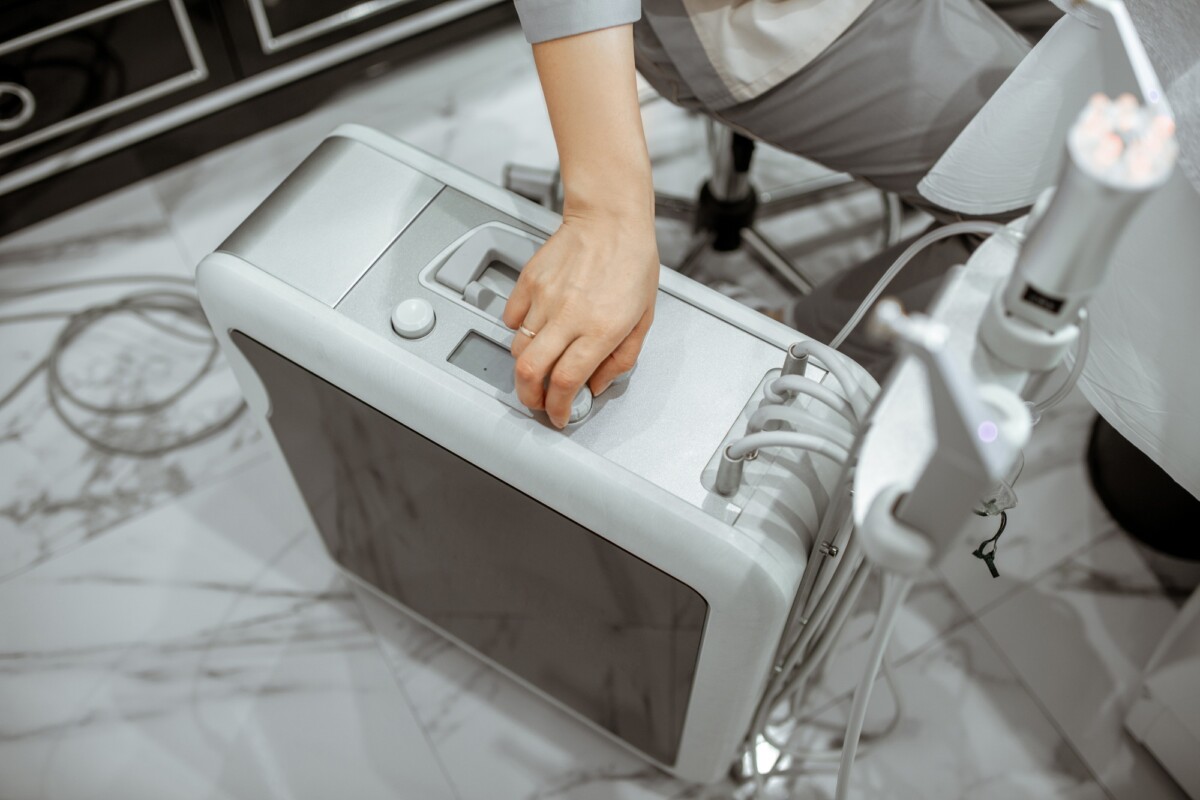Stay Oxygenated Anytime, Anywhere with Portable Oxygen Machines
Portable oxygen machines, also known as oxygen concentrators, have become a crucial tool for individuals who require oxygen therapy on the go. With advancements in technology, these machines are more compact, efficient, and user-friendly than ever before. In 2025, understanding the different options, costs, benefits, and insurance coverage for portable oxygen machines is essential for those considering this important medical device.
What Are Portable Oxygen Machines?
Portable oxygen machines are medical devices designed to provide supplemental oxygen to individuals who have low oxygen levels in their blood. These devices are portable, allowing patients to receive oxygen therapy wherever they go, which is especially important for people with chronic respiratory conditions such as COPD, asthma, or pulmonary fibrosis.
How Do Portable Oxygen Machines Work?
Portable oxygen machines work by drawing in air from the surrounding environment, filtering out nitrogen, and then delivering concentrated oxygen to the user through a nasal cannula or face mask. Unlike oxygen tanks, which require refills, portable oxygen concentrators (POCs) are powered by batteries and can operate continuously, offering a more convenient solution for oxygen therapy on the move.
Types of Portable Oxygen Machines
There are two primary types of portable oxygen machines:
-
Continuous Flow Oxygen Concentrators – These machines deliver a constant flow of oxygen. They are ideal for patients who need a steady stream of oxygen and are often used for individuals who have difficulty breathing on their own.
-
Pulse Dose Oxygen Concentrators – These machines deliver oxygen in pulses when the patient inhales, which helps conserve battery life and is more energy-efficient.
Benefits of Using Portable Oxygen Machines
Convenience and Mobility
The primary benefit of portable oxygen machines is their portability. Patients no longer have to stay at home to receive oxygen therapy. These devices can be carried or wheeled around, making it easier to travel, go to work, or attend social events without interrupting therapy.
Improved Quality of Life
Having access to portable oxygen allows patients to live more independently and engage in a wider variety of activities. They can enjoy an improved quality of life by resuming hobbies, socializing with friends, or going for walks without being restricted to stationary oxygen tanks.
Health Benefits of Oxygen Therapy
Oxygen therapy helps patients manage conditions such as COPD, sleep apnea, and other respiratory disorders. By increasing the amount of oxygen in the blood, these devices improve lung function, reduce shortness of breath, and increase energy levels, making daily activities easier.
How Much Do Portable Oxygen Machines Cost?
The cost of portable oxygen machines varies widely based on the model, features, and technology. On average, prices range from $2,000 to $7,000, though rental options are available as well.
Price Range of Portable Oxygen Machines
-
Basic Models: Prices can start as low as $2,000 for a simple, no-frills model.
-
Mid-Range Models: These may cost anywhere from $3,500 to $5,000, offering more features such as longer battery life or quieter operation.
-
Premium Models: High-end machines with advanced features may range from $5,000 to $7,000 or more.
Factors That Affect the Cost
Several factors can influence the price of portable oxygen machines:
-
Battery life: Longer battery life often increases the price.
-
Weight: Lightweight models tend to be more expensive.
-
Technology: Pulse-dose machines may be more expensive than continuous-flow models.
-
Accessories: Extra accessories, such as carrying cases and extra batteries, can add to the cost.
Does Medicare Pay for Portable Oxygen Machines?
Medicare does offer coverage for portable oxygen machines under certain conditions, particularly for patients who meet the medical criteria for oxygen therapy.
Understanding Medicare Coverage for Oxygen Therapy
Medicare Part B covers the rental of oxygen equipment, including portable oxygen machines, if the patient has a documented need for oxygen therapy and meets specific health conditions. Medicare will typically cover 80% of the cost for oxygen machines, with the remaining 20% being the responsibility of the patient.
How to Qualify for a Portable Oxygen Machine
To qualify for a portable oxygen concentrator, patients must be diagnosed with a respiratory condition that causes low blood oxygen levels, such as chronic obstructive pulmonary disease (COPD), pulmonary fibrosis, or sleep apnea.
Requirements for Oxygen Therapy
Your healthcare provider will need to conduct tests to measure your oxygen levels and determine whether oxygen therapy is appropriate for you. These tests may include:
-
Pulse oximetry: A test that measures the oxygen saturation in your blood.
-
Arterial blood gas (ABG) test: A more accurate test to measure blood oxygen levels.
Working with Your Doctor to Qualify
To qualify for a portable oxygen concentrator, you will need a prescription from your doctor. The prescription will specify the flow rate and duration of oxygen therapy, which are essential factors in determining the appropriate type of machine.
How to Choose the Right Portable Oxygen Machine
When selecting a portable oxygen machine, it’s important to consider factors such as:
-
Size and weight: Smaller, lighter machines are more portable but may have shorter battery life.
-
Battery life: Ensure the machine has enough battery life to last through your daily activities.
-
Noise level: A quieter machine will be less intrusive, especially in social settings.
-
Warranty and customer support: Choose a brand with good customer support and a reliable warranty.
Considerations for Selecting the Best Model
-
Flow rate: The oxygen flow rate should match your prescription. Some models offer adjustable flow rates for flexibility.
-
Travel compatibility: If you plan to travel, consider the portability and FAA approval for air travel.
-
Durability: Look for machines made from durable materials that can withstand daily wear and tear.
Differences Between Portable Oxygen Machines and Concentrators
Although the terms “portable oxygen machine” and “portable oxygen concentrator” are often used interchangeably, they have slight differences.
Key Differences Between the Two
-
Oxygen delivery: Concentrators generate oxygen from the air, while machines may use stored oxygen tanks.
-
Size: Portable oxygen concentrators tend to be more compact and lightweight than traditional machines.
Advantages of Each Option
-
Portable oxygen machines are typically less expensive and can be refilled with oxygen tanks, making them ideal for short-term use.
-
Portable oxygen concentrators are more efficient and suitable for long-term use, as they eliminate the need for refills.
Frequently Asked Questions
Do I need a prescription for a portable oxygen machine?
Yes, a prescription from a doctor is required to obtain a portable oxygen machine, as it is a medical device.
Does Medicare pay for portable air concentrators?
Medicare will pay for a portable oxygen concentrator if it is deemed medically necessary. Medicare Part B typically covers 80% of the cost, with the patient responsible for the remaining 20%.
What is the difference between a portable oxygen machine and a portable oxygen concentrator?
A portable oxygen machine uses oxygen tanks, while a portable oxygen concentrator generates oxygen from the air. The concentrator is generally more efficient and suitable for long-term use.
How much does a portable oxygen container cost?
The cost of a portable oxygen container ranges from $2,000 to $7,000, depending on the model and features.
How do I qualify for a portable oxygen concentrator?
You must have a medical condition that causes low oxygen levels in your blood. A doctor will conduct tests to determine if you need oxygen therapy.
What is a dangerously low oxygen level?
A dangerously low oxygen level is typically below 90%. If your oxygen level drops below this threshold, you should seek medical assistance immediately.
Final Thoughts
Portable oxygen machines have revolutionized the way people manage their respiratory conditions, offering mobility, convenience, and improved quality of life. With various models to choose from, understanding the features, costs, and insurance options available can help you make the best decision for your health and lifestyle. Be sure to consult your healthcare provider to find the right machine for your needs.
Get the coverage you deserve at the price you can afford! Visit Newmedicare.com for a free quote now or call 833-203-6742.






